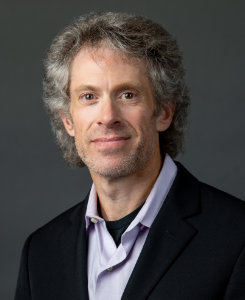Andrei Codrescu is not just an English professor. He is an essayist, poet, screenwriter and commentator for National Public Radio. He also writes short stories and novels and edits Exquisite Corpse, a web-journal containing book reviews and writings.
He has received numerous awards for his work, including fellowships for poetry, editing and radio from the National Endowment for the Arts.
In 1984, Codrescu came to the University to teach in the English department.
The following year, Codrescu donated his manuscripts and personal papers to LSU.
Twenty years later, Elaine Smyth, curator of Special Collections at Hill Memorial Library, faced the daunting task of organizing his donation into an exhibition.
“It was really hard to work with someone who was alive,” Smyth said. “Knowing he would get to see it made it a bit intimidating.”
Usually, curators prepare exhibitions when the authors are deceased. So the subject of the exhibition normally would not see the work, Smyth said.
Smyth decided to concentrate on Codrescu’s writing to tell his story.
“I focused on his work and how he presented himself through it,” she said.
Over the course of 10 months, Smyth worked alone, poring over volume after volume of Codrescu’s donated papers. Despite the magnitude of the project, Smyth remains humble about her work.
“It was interesting because I would find letters from people he was corresponding with, sometimes they were people I knew,” Smyth said. “It was fun for me personally, and it proved easy because [the donation] was incredibly voluminous.”
Once Smyth decided what direction she was going to take in designing the exhibition, she had to design the visual aspects.
The exhibition is split into two levels. The first floor contains a sort of timeline of Codrescu’s life as told by his own writing. The second floor contains some artwork as well as actual volumes displayed in frames and cases.
Smyth said she wanted the exhibition to have a visual unity that included historical references so the visitor would understand what was going on in the world and Codrescu’s life at the time.
Smyth worked with Leah Wood Jewitt, exhibitions coordinator, on the visual aspects of the exhibit.
Jewitt helped with the placement of items on the walls and in the cases. She also coordinated the copying, scanning and printing of the original items for placement in the exhibit.
Jewitt said the use of correspondence and journal entries give the viewer an insight into Codrescu’s work.
“His work is so varied – even if you think you know his writing, I guarantee that this exhibition will teach you something new.”
As formidable of a task as it was for Smyth, Codrescu was nervous as well.
“At first I was afraid to go because I thought it might make me feel like I was already dead,” Codrescu said. “But Elaine made a coherent and lively story from the materials she was given.”
Codrescu said it was interesting to see the exhibition because if his papers had been given to anyone else, it could have turned out completely different.
“It is just one possible story of my life and writing,” he said. “I am pleased it represented something real – it makes me feel like I did something positive with my life.”
Contact Meghan Legaux at [email protected]
Exhibit highlights life of English professor, writer
September 11, 2005





